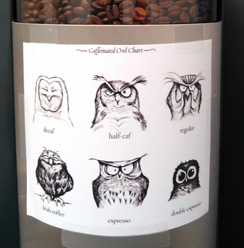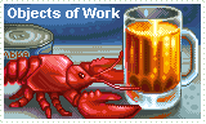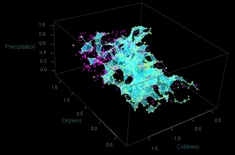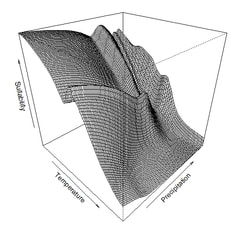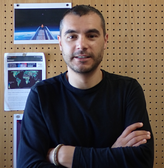
Hi, my name is César Capinha and I am a researcher on biogeography, biological invasions and machine learning. I'm currently Ass. Professor at the Univ. of Lisbon and Researcher at the Centre for Geographic Studies (Univ. of Lisbon).
My main research interests revolve around the analysis and prediction of biogeographical changes caused by human mediated dispersal of species, with a global scale perspective. I'm also very interested in the spatial and temporal predictive modelling of ecological and biological phenomena. I usually tackle these topics using state-of-the-art machine learning approaches and small-to-big data sources.
Keywords: Biogeographical Change | Biological Invasions | Macroecology | Predictive Modelling | Machine Learning and AI
You can find me with my group of great researchers and students at BIOCHANGE.PT;
Also as Senior Editor @ Diversity and Distributions, on ResearchGate and at Google Scholar;
At my institution: CEG-IGOT, UL.
You can reach me directly at: cesarcapinha(_at_)edu.ulisboa.pt
My main research interests revolve around the analysis and prediction of biogeographical changes caused by human mediated dispersal of species, with a global scale perspective. I'm also very interested in the spatial and temporal predictive modelling of ecological and biological phenomena. I usually tackle these topics using state-of-the-art machine learning approaches and small-to-big data sources.
Keywords: Biogeographical Change | Biological Invasions | Macroecology | Predictive Modelling | Machine Learning and AI
You can find me with my group of great researchers and students at BIOCHANGE.PT;
Also as Senior Editor @ Diversity and Distributions, on ResearchGate and at Google Scholar;
At my institution: CEG-IGOT, UL.
You can reach me directly at: cesarcapinha(_at_)edu.ulisboa.pt
SOME NEWS
- 2024.07: Paper out led by master student Iúri Diogo on the risk of invasion by broadleaf watermilfoil in mainland Portugal.
- 2024.07: Paper out from the EuropaBON consortia on the user and policy needs for biodiversity monitoring in Europe.
- 2024.06: New work providing a machine learning workflow to use citizen science data for modelling the timing of ecological phenomena across regions.
- 2024.05: Publication assessing the potential distribution, observed impacts, and invasion risk of two problematic non-native snapping turtles.
- 024.04: Happy to be listed as one of 'Best Ecology and Evolution Scientists in Portugal'.
- 2024.02: Publication out on economic costs of invasion in urban areas.
- 2024.01: New work examining land-use pressures on Iberian peatlands.
- 2023.12: Two new works on Journal of Biogeography, addressing the potential sources of time lags in species. distribution models and the global biogeography of alien fungus pathogens.
- 023.09: New work giving statistical estimates of time to arrival of the Tiger mosquito to yet, uninvaded, countries.
- 2023.08: New paper showing how deep learning can be applied to predict classes of disease vector abundances in response to weather and temporal variation.
- 2023.07: New work on changes in macrobenthic biodiversity associated to mangrove afforestation.
- 2023.06: New publication reporting the negative and positive impacts of non-native macrofungi (aka mushrooms) worldwide.
- 2023.05: Non-native species distribution reporting exhibits significant variation in terms of data provision, data delivery structures, and terminology usage. New paper.
- 2023.04: New work relating land use with the incidence and richness of non-native species at local scales out in Nature Communications.
- 2023.02: Happy (and surprised) to have been nominated full member of the Sigma Xi Scientific Research Honor Society.
- 2023.01: New work in PNAS uncovering the global-scale networks of spread of alien species.
- 2022.09: New work assessing the current and future potential distribution of Aedes aegypti on Madeira Island.
- 2022.09: Started a new position as Ass. Professor at the University of Lisbon.
- 2022.08: New publication assessing the patterns and drivers of the worldwide distribution of non-native mushrooms.
- 2022.08: New publication measuring and assessing the global economic costs of non-native herpetofauna. [Coverage in The Conversation]
- 2022.07: Cool new work assessing the risk of invasion of traded birds worldwide, mainly psittacines, out on Global Change Biology.
- 2022.06: New paper where we assess the drivers and magnitude of alien species on the diversity and biogeography of grasslands in South America.
- 2022.04: Global economic costs of invasive invertebrate species measured and examined in a new publication.
- 2022.03: One paper exploring the effects of geo-political shifts on global wildlife trade published on BioScience and other assessing and predicting the distribution of riparian invasive plants in continental Portugal on Frontiers in Ecology and Evolution.
- 2022.01: Online piece about the invasive alien mosquito Aedes albopictus.
- 2021.11: A review paper on invasive alien mammal species in Europe published in Mammal Review.
- 2021.08: Three publications adressing the economic impacts of alien species in Europe, the Mediterranean region and in Central and South America. [Press coverage on Phys.org]
- 2021.04: Paper with accounts of the global economic costs of aquatic invasive species. [Coverage on Phys.org]
- 2021.04: Paper on a major database of economic costs of biological invasions collected from non-english sources.
- 2021.02: Paper published on the use for Deep learning for automated classification of temporal data.
- 2020.12: Paper accepted on the detailed distribution of alien terrestrial vertebrates across the Iberian Peninsula.
- 2020.10: Honored to join Diversity and Distributions as Associated Editor.
- 2020.10: Paper projecting the numbers of alien species for 2050. [Coverage from The Telegraph and EurekAlert! ]
- 2020.08: Call for applications: PhD scholarship on biological invasions & modelling & disease vectors .
- 2020.07: Paper on the drivers of future alien species impacts. [Media coverage from The Guardian]
- 2020.06: Paper on the application of machine learning for prediction of dengue importation.
- 2020.05: Paper published on the biogeographical globalization of insular herpetofaunas.
- 2020.04: Data paper presenting a database of the distribution of alien macrofungi published online in open access.
- 2019.12: New paper on the drivers of compositional dissimilarity for native and alien birds in urban areas online in Biological Invasions.
- 2019.11: Meet me at the awesome InvaCost meeting in Paris.
- 2019.10: New paper on the global potential distribution of Procambarus clarkii and Pacifastacus leniusculus.
- 2019.10: New paper on the distribution of Austropotamobius pallipes in France.
- 2019.08: Presented communication "The role of biological invasions in biotic homogenization" at EEF 2019 | 15th EEF – European Ecological Federation Congress.
- 2019.05: Joined CEG-IGOT at the University of Lisbon as FCT researcher (equiv. assistant professor).
- 2019.04: New paper on how to predict the temporal variation of ecological phenomena using discrete event data.
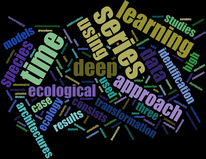
New POSTs:
We have recently made available a preprint on the use of deep learning for classifying time series. This is an exciting avenue of future work in ecology, with many possibilities of application. Still a preprint, but a quite cool one in our opinion :)
We have recently made available a preprint on the use of deep learning for classifying time series. This is an exciting avenue of future work in ecology, with many possibilities of application. Still a preprint, but a quite cool one in our opinion :)
-> OLDER POSTS:
In a paper published in NeoBiota we show that regional numbers of alien species are hard to predict.
Numbers of alien species remain unknown for many regions of the world. Plausibly, models fitting the relationships between known numbers and the environmental and socioeconomic attributes of the corresponding regions could help cover the knowledge gaps. We tested this possibility and found that the predictive accuracy of this approach is generally low, particularly when predictions are made for regions outside the geographical boundaries of the available data (e.g. if data from the US is used to predict in Australia). In sum, we show that predicting numbers of alien species is very challenging, ultimately emphasizing the need to reinforce the surveying, publication and updating of distribution data for alien species. Read the full paper here.
-> Last September I gave a long interview to a national radio station (Antena 1) regarding alien species and their impact on global biogeography. You can listen to the full interview here (in Portuguese): http://www.rtp.pt/play/p2063/e250799/ponto-de-partida
-> Happy to announce that we just got out a paper on the global biogeography of alien herptiles in the journal Diversity and Distributions. See paper here.
-> "Assessing future habitat availability for coastal lowland anurans in the Brazilian Atlantic rainforest"
One sentence summary: Sea level rise may drastically reduce available habitat for some species of coastal anurans in the Brazilian Atlantic rainforest. You can find the paper here.
-> Editor's introduction to our new paper in the journal Science analyzing the global-scale biogeographic pattern that is emerging among terrestrial gastropods being dispersed by human activities:
"Human influences are leading to a shift in the geographical distribution of animal species. Capinha et al. compared the distributions of native mollusk species with those introduced to new areas by human activities. The ranges of native species are still broadly constrained by limitations on their capacity for dispersal, whereas those of the introduced aliens are affected more by climate and patterns of human movement. As humans continue to break down barriers to dispersal, more species’ distributions will come to be limited by their environmental tolerances." You can find the paper here.
-> I am no longer maintaining my (old) capinha(at)uevora.pt e-mail. If you want to contact me please use the email address provided above.
-> I recently moved to the CIBIO/InBIO Research Centre. (07-05-2015)
-> Editor's introduction to our new paper on the global distribution of Aedes aegypti, the main vector of dengue: "Capinha et al. focus on the importance of macroclimate in shaping the distribution of Aedes aegypti - a domestic mosquito that is the main vector of dengue, a highly prevalent disease. Using a correlative model, they show that much of the species range outside tropical regions is sustained by man-made environments but that the boundaries of this range are set by macroclimate barriers. This suggests that global climate change may have profound effects on the future distribution of this important disease-vector." Read it here.
Predicting species distributions with alpha-shapes
->I and Beatriz Pateiro-Lopez have a new paper in Ecological informatics concerning the use of alpha-shapes for predicting the potential distribution of species in new areas (as for invasions) or time periods (as under future climates). Alpha-shapes are an extremely simple and intuitive geometric delimitation method which only requires occurrence data and that does not assume the shape of the niche a priori − as BIOCLIM or Mahalanobis distances do. Here I show how this method can be implemented in R for delimiting a specie's realized niche.
-> On the 5th of February I'll give a talk about how observed patterns in the climatic conditions occupied by invaders may help assessing the a priori uncertainty of climate-matching predictions. The talk will start at 12:00h and will take place in the Faculty of Sciences of the University of Lisbon. Read more about it here.
->A visit to the German Centre for Integrative Biodiversity Research - iDiv is on my schedule for next week. It will also be a great opportunity to get to know Lepzig. (29-11-2013)
->A talk of Walter Jetz at CBA. For this and other great guests have a look here :) (07-09-2013)
->During July and August I'll be at the Alexander Koenig Research Museum in Bonn. A very nice place (and location: about 100m from the Rhine) with really great people (and beer and pizza...) but, so far, awful weather... I'm working with Dennis Rödder on some analyses of the distribution of non-native terrestrial gastropods. This work also counts with the contribution of Heike Kappes from Naturalis and Herique Pereira, my PI. Hopefully it will see the light of day in a few months. (22-07-2013)
->New paper in Conservation Biology dealing with the combined effect of climate change, non-native crayfish and crayfish plague on native European crayfishes as been published. Read it here.
(22-07-2013)-> OLDER POSTS:
In a paper published in NeoBiota we show that regional numbers of alien species are hard to predict.
Numbers of alien species remain unknown for many regions of the world. Plausibly, models fitting the relationships between known numbers and the environmental and socioeconomic attributes of the corresponding regions could help cover the knowledge gaps. We tested this possibility and found that the predictive accuracy of this approach is generally low, particularly when predictions are made for regions outside the geographical boundaries of the available data (e.g. if data from the US is used to predict in Australia). In sum, we show that predicting numbers of alien species is very challenging, ultimately emphasizing the need to reinforce the surveying, publication and updating of distribution data for alien species. Read the full paper here.
-> I'm (slowly) putting forward a personal project that aims to provide short-term spatio-temporal forecasts of mushroom fruiting across Europe and North America. A beta version of the project (and of the forecasts) is already live at: mushroomforecast.com. The project aims to exemplify how ecological research can provide tools and information directed to the general public.
-> Last September I gave a long interview to a national radio station (Antena 1) regarding alien species and their impact on global biogeography. You can listen to the full interview here (in Portuguese): http://www.rtp.pt/play/p2063/e250799/ponto-de-partida
-> Happy to announce that we just got out a paper on the global biogeography of alien herptiles in the journal Diversity and Distributions. See paper here.
-> "Assessing future habitat availability for coastal lowland anurans in the Brazilian Atlantic rainforest"
One sentence summary: Sea level rise may drastically reduce available habitat for some species of coastal anurans in the Brazilian Atlantic rainforest. You can find the paper here.
-> Editor's introduction to our new paper in the journal Science analyzing the global-scale biogeographic pattern that is emerging among terrestrial gastropods being dispersed by human activities:
"Human influences are leading to a shift in the geographical distribution of animal species. Capinha et al. compared the distributions of native mollusk species with those introduced to new areas by human activities. The ranges of native species are still broadly constrained by limitations on their capacity for dispersal, whereas those of the introduced aliens are affected more by climate and patterns of human movement. As humans continue to break down barriers to dispersal, more species’ distributions will come to be limited by their environmental tolerances." You can find the paper here.
-> I am no longer maintaining my (old) capinha(at)uevora.pt e-mail. If you want to contact me please use the email address provided above.
-> I recently moved to the CIBIO/InBIO Research Centre. (07-05-2015)
-> Editor's introduction to our new paper on the global distribution of Aedes aegypti, the main vector of dengue: "Capinha et al. focus on the importance of macroclimate in shaping the distribution of Aedes aegypti - a domestic mosquito that is the main vector of dengue, a highly prevalent disease. Using a correlative model, they show that much of the species range outside tropical regions is sustained by man-made environments but that the boundaries of this range are set by macroclimate barriers. This suggests that global climate change may have profound effects on the future distribution of this important disease-vector." Read it here.
Predicting species distributions with alpha-shapes
->I and Beatriz Pateiro-Lopez have a new paper in Ecological informatics concerning the use of alpha-shapes for predicting the potential distribution of species in new areas (as for invasions) or time periods (as under future climates). Alpha-shapes are an extremely simple and intuitive geometric delimitation method which only requires occurrence data and that does not assume the shape of the niche a priori − as BIOCLIM or Mahalanobis distances do. Here I show how this method can be implemented in R for delimiting a specie's realized niche.
-> On the 5th of February I'll give a talk about how observed patterns in the climatic conditions occupied by invaders may help assessing the a priori uncertainty of climate-matching predictions. The talk will start at 12:00h and will take place in the Faculty of Sciences of the University of Lisbon. Read more about it here.
->A visit to the German Centre for Integrative Biodiversity Research - iDiv is on my schedule for next week. It will also be a great opportunity to get to know Lepzig. (29-11-2013)
->A talk of Walter Jetz at CBA. For this and other great guests have a look here :) (07-09-2013)
->During July and August I'll be at the Alexander Koenig Research Museum in Bonn. A very nice place (and location: about 100m from the Rhine) with really great people (and beer and pizza...) but, so far, awful weather... I'm working with Dennis Rödder on some analyses of the distribution of non-native terrestrial gastropods. This work also counts with the contribution of Heike Kappes from Naturalis and Herique Pereira, my PI. Hopefully it will see the light of day in a few months. (22-07-2013)
->New paper in Conservation Biology dealing with the combined effect of climate change, non-native crayfish and crayfish plague on native European crayfishes as been published. Read it here.
(22-07-2013)
In a paper published in NeoBiota we show that regional numbers of alien species are hard to predict.
Numbers of alien species remain unknown for many regions of the world. Plausibly, models fitting the relationships between known numbers and the environmental and socioeconomic attributes of the corresponding regions could help cover the knowledge gaps. We tested this possibility and found that the predictive accuracy of this approach is generally low, particularly when predictions are made for regions outside the geographical boundaries of the available data (e.g. if data from the US is used to predict in Australia). In sum, we show that predicting numbers of alien species is very challenging, ultimately emphasizing the need to reinforce the surveying, publication and updating of distribution data for alien species. Read the full paper here.
-> Last September I gave a long interview to a national radio station (Antena 1) regarding alien species and their impact on global biogeography. You can listen to the full interview here (in Portuguese): http://www.rtp.pt/play/p2063/e250799/ponto-de-partida
-> Happy to announce that we just got out a paper on the global biogeography of alien herptiles in the journal Diversity and Distributions. See paper here.
-> "Assessing future habitat availability for coastal lowland anurans in the Brazilian Atlantic rainforest"
One sentence summary: Sea level rise may drastically reduce available habitat for some species of coastal anurans in the Brazilian Atlantic rainforest. You can find the paper here.
-> Editor's introduction to our new paper in the journal Science analyzing the global-scale biogeographic pattern that is emerging among terrestrial gastropods being dispersed by human activities:
"Human influences are leading to a shift in the geographical distribution of animal species. Capinha et al. compared the distributions of native mollusk species with those introduced to new areas by human activities. The ranges of native species are still broadly constrained by limitations on their capacity for dispersal, whereas those of the introduced aliens are affected more by climate and patterns of human movement. As humans continue to break down barriers to dispersal, more species’ distributions will come to be limited by their environmental tolerances." You can find the paper here.
-> I am no longer maintaining my (old) capinha(at)uevora.pt e-mail. If you want to contact me please use the email address provided above.
-> I recently moved to the CIBIO/InBIO Research Centre. (07-05-2015)
-> Editor's introduction to our new paper on the global distribution of Aedes aegypti, the main vector of dengue: "Capinha et al. focus on the importance of macroclimate in shaping the distribution of Aedes aegypti - a domestic mosquito that is the main vector of dengue, a highly prevalent disease. Using a correlative model, they show that much of the species range outside tropical regions is sustained by man-made environments but that the boundaries of this range are set by macroclimate barriers. This suggests that global climate change may have profound effects on the future distribution of this important disease-vector." Read it here.
Predicting species distributions with alpha-shapes
->I and Beatriz Pateiro-Lopez have a new paper in Ecological informatics concerning the use of alpha-shapes for predicting the potential distribution of species in new areas (as for invasions) or time periods (as under future climates). Alpha-shapes are an extremely simple and intuitive geometric delimitation method which only requires occurrence data and that does not assume the shape of the niche a priori − as BIOCLIM or Mahalanobis distances do. Here I show how this method can be implemented in R for delimiting a specie's realized niche.
-> On the 5th of February I'll give a talk about how observed patterns in the climatic conditions occupied by invaders may help assessing the a priori uncertainty of climate-matching predictions. The talk will start at 12:00h and will take place in the Faculty of Sciences of the University of Lisbon. Read more about it here.
->A visit to the German Centre for Integrative Biodiversity Research - iDiv is on my schedule for next week. It will also be a great opportunity to get to know Lepzig. (29-11-2013)
->A talk of Walter Jetz at CBA. For this and other great guests have a look here :) (07-09-2013)
->During July and August I'll be at the Alexander Koenig Research Museum in Bonn. A very nice place (and location: about 100m from the Rhine) with really great people (and beer and pizza...) but, so far, awful weather... I'm working with Dennis Rödder on some analyses of the distribution of non-native terrestrial gastropods. This work also counts with the contribution of Heike Kappes from Naturalis and Herique Pereira, my PI. Hopefully it will see the light of day in a few months. (22-07-2013)
->New paper in Conservation Biology dealing with the combined effect of climate change, non-native crayfish and crayfish plague on native European crayfishes as been published. Read it here.
(22-07-2013)-> OLDER POSTS:
In a paper published in NeoBiota we show that regional numbers of alien species are hard to predict.
Numbers of alien species remain unknown for many regions of the world. Plausibly, models fitting the relationships between known numbers and the environmental and socioeconomic attributes of the corresponding regions could help cover the knowledge gaps. We tested this possibility and found that the predictive accuracy of this approach is generally low, particularly when predictions are made for regions outside the geographical boundaries of the available data (e.g. if data from the US is used to predict in Australia). In sum, we show that predicting numbers of alien species is very challenging, ultimately emphasizing the need to reinforce the surveying, publication and updating of distribution data for alien species. Read the full paper here.
-> I'm (slowly) putting forward a personal project that aims to provide short-term spatio-temporal forecasts of mushroom fruiting across Europe and North America. A beta version of the project (and of the forecasts) is already live at: mushroomforecast.com. The project aims to exemplify how ecological research can provide tools and information directed to the general public.
-> Last September I gave a long interview to a national radio station (Antena 1) regarding alien species and their impact on global biogeography. You can listen to the full interview here (in Portuguese): http://www.rtp.pt/play/p2063/e250799/ponto-de-partida
-> Happy to announce that we just got out a paper on the global biogeography of alien herptiles in the journal Diversity and Distributions. See paper here.
-> "Assessing future habitat availability for coastal lowland anurans in the Brazilian Atlantic rainforest"
One sentence summary: Sea level rise may drastically reduce available habitat for some species of coastal anurans in the Brazilian Atlantic rainforest. You can find the paper here.
-> Editor's introduction to our new paper in the journal Science analyzing the global-scale biogeographic pattern that is emerging among terrestrial gastropods being dispersed by human activities:
"Human influences are leading to a shift in the geographical distribution of animal species. Capinha et al. compared the distributions of native mollusk species with those introduced to new areas by human activities. The ranges of native species are still broadly constrained by limitations on their capacity for dispersal, whereas those of the introduced aliens are affected more by climate and patterns of human movement. As humans continue to break down barriers to dispersal, more species’ distributions will come to be limited by their environmental tolerances." You can find the paper here.
-> I am no longer maintaining my (old) capinha(at)uevora.pt e-mail. If you want to contact me please use the email address provided above.
-> I recently moved to the CIBIO/InBIO Research Centre. (07-05-2015)
-> Editor's introduction to our new paper on the global distribution of Aedes aegypti, the main vector of dengue: "Capinha et al. focus on the importance of macroclimate in shaping the distribution of Aedes aegypti - a domestic mosquito that is the main vector of dengue, a highly prevalent disease. Using a correlative model, they show that much of the species range outside tropical regions is sustained by man-made environments but that the boundaries of this range are set by macroclimate barriers. This suggests that global climate change may have profound effects on the future distribution of this important disease-vector." Read it here.
Predicting species distributions with alpha-shapes
->I and Beatriz Pateiro-Lopez have a new paper in Ecological informatics concerning the use of alpha-shapes for predicting the potential distribution of species in new areas (as for invasions) or time periods (as under future climates). Alpha-shapes are an extremely simple and intuitive geometric delimitation method which only requires occurrence data and that does not assume the shape of the niche a priori − as BIOCLIM or Mahalanobis distances do. Here I show how this method can be implemented in R for delimiting a specie's realized niche.
-> On the 5th of February I'll give a talk about how observed patterns in the climatic conditions occupied by invaders may help assessing the a priori uncertainty of climate-matching predictions. The talk will start at 12:00h and will take place in the Faculty of Sciences of the University of Lisbon. Read more about it here.
->A visit to the German Centre for Integrative Biodiversity Research - iDiv is on my schedule for next week. It will also be a great opportunity to get to know Lepzig. (29-11-2013)
->A talk of Walter Jetz at CBA. For this and other great guests have a look here :) (07-09-2013)
->During July and August I'll be at the Alexander Koenig Research Museum in Bonn. A very nice place (and location: about 100m from the Rhine) with really great people (and beer and pizza...) but, so far, awful weather... I'm working with Dennis Rödder on some analyses of the distribution of non-native terrestrial gastropods. This work also counts with the contribution of Heike Kappes from Naturalis and Herique Pereira, my PI. Hopefully it will see the light of day in a few months. (22-07-2013)
->New paper in Conservation Biology dealing with the combined effect of climate change, non-native crayfish and crayfish plague on native European crayfishes as been published. Read it here.
(22-07-2013)
geek stuff
